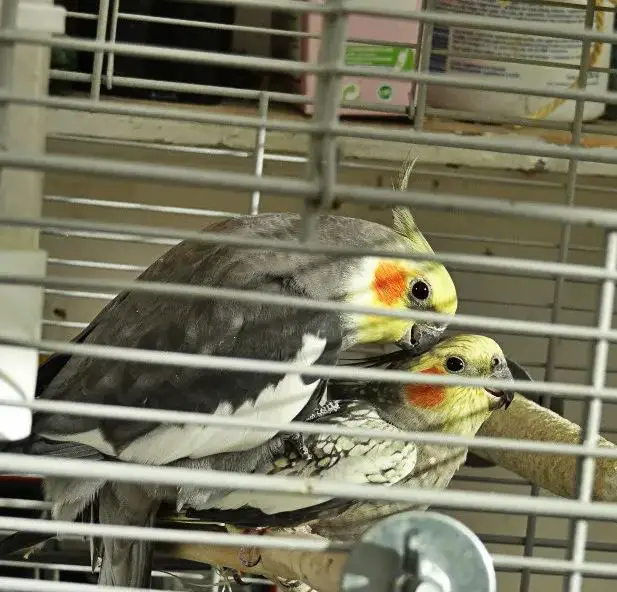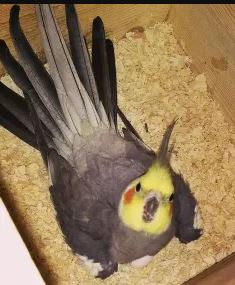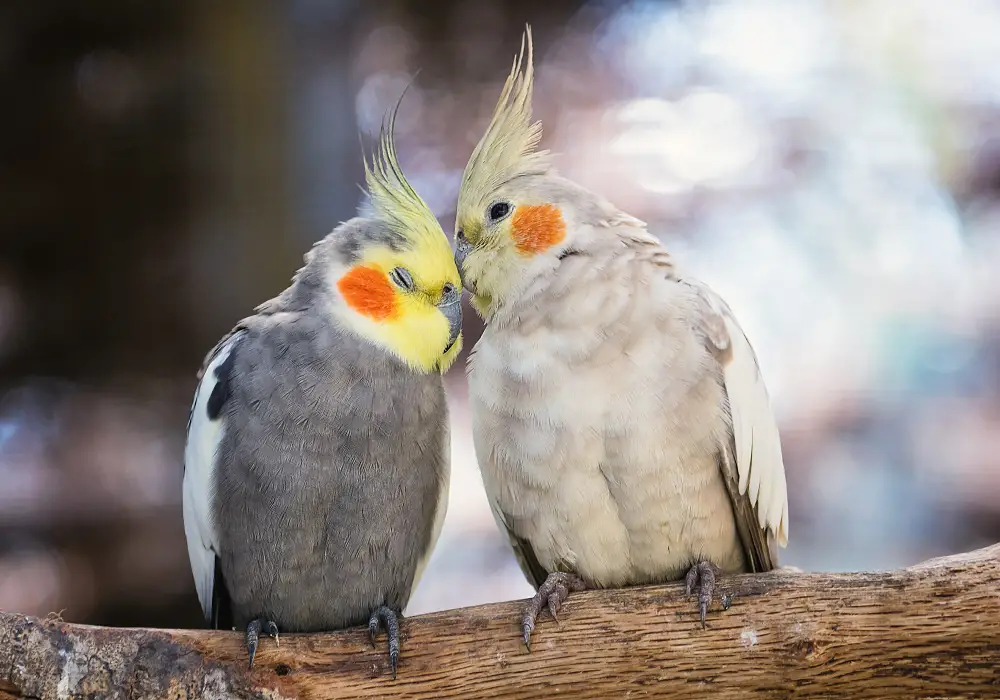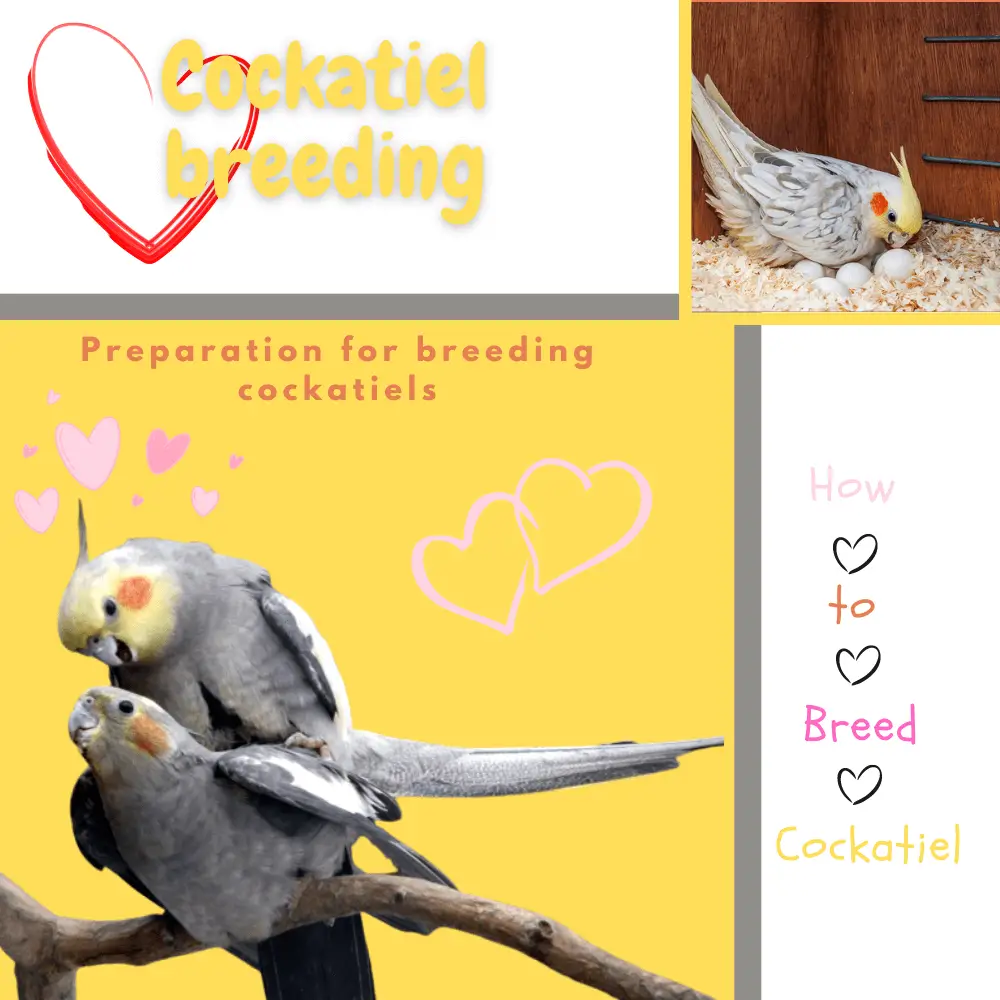Cockatiel reproduction
For those who want to experience the joy of breeding at home, the cockatiel is a great choice to start.
It is a prolific bird and it breeds well indoors all year round and outdoors in the right season (spring and summer).
So cockatiel breeding is accessible to everyone
The cockatiel lays between 5 and 6 eggs on average with a spacing of 24 hours between each egg and an incubation period of 21 days.
Usually, the couple incubates alternately, the male mostly during the day and the female from evening until morning. Sometimes the two come together to brood as a team… What a couple’s life !!! lol.
Preparation for breeding cockatiels
 Cockatiel breeding
Cockatiel breeding
Cockatiel cage
For a couple and if you are indoors, you will need a spacious and practical cage. Saying there are no standard sizes, the bigger the better.
But if you are lost in the choice of the cage, just take this Montana Madeira I cage as an example. To see other models, here is our selection of cages.
Cockatiel Food
The captive diet of cockatiels is based mainly on seeds and food intake such as cuttlebone
However, before and during breeding, more is needed. During this period the birds spend a lot of energy, especially on the female who must constitute the eggs and be able to expel them.
Then, the couple must make other efforts during the brooding in order to keep the eggs warm… Therefore, vitamin and mineral contributions are essential.
The germinated seeds are an excellent source of vitamins. To make it, I take a mixture of VERSELE-LAGA seeds for germination.
I soak the mixture in water for 48 hours, changing the water 2 to 3 times. Then I place it in a germinator or a plate and I rinse it at least once a day. Then as soon as the germs come out, I squeeze them into the birds 3x a week.
For more info on how to prepare sprouted seeds, click here.
Ps: But before serving them, get in the habit of smelling them because they sometimes turn with heat.
In addition, we can give egg mash which is rich in protein to promote the incubation and feeding of young birds …
Cockatiel nest

For the cockatiel, the classic nest measures 20l * 20L * 30H cm. Personally, I keep the same height and I increase the dimensions of its base so as to have 25 cm in width and 25 cm in depth.
My goal is to have more space inside for the whole family. In addition, it reduces the risk of crushing the less strong chicks …
You can find it in pet stores or on the internet but also you can make it yourself, here is a tutorial to ” make a parakeet nest in 5 steps”.
Taming a cockatiel
This species is easily tamed. Of course, hand breeding is not given to everyone. But also with nest manipulation, easier to practice and gives good results. Here is our article on this method: method and advice
Cockatiels mutations
We touched on the subject of cockatiel reproduction above. However, for the mutations part,
I called on a breeder passionate about hooked beaks to give us complete feedback on cockatiel mutations.
How to Breed Cockatiels
SOURCE: Boby Gamer
The hazards of cockatiel reproduction

Egg-laying sickness
The ideal age to start breeding cockatiels is one and a half years for a female, this will decrease the risk of egg-laying sickness which results in the female’s inability to expel the egg. It can also happen despite the female being at the age required for reproduction.
From the first symptoms in the female:
- weakened bird curls into a ball
- lump visible to the eye or to the touch in the lower abdomen …
We must intervene quickly. First, by lubricating the bird’s cloaca with oil or petroleum jelly.
Then administer a drop of paraffin oil directly into its beak then put 5 drops in the drinking water.
To further promote the expansion of the cloaca, hold the bird above a bowl of boiling water to promote the expansion of the cloaca, being careful to burn it …
Consulting a veterinarian is recommended in the event of a complication.
The loss of chicks
Know that in nature birds are vulnerable and they are faced with many predators. To preserve their maintenance in the wild, they make several eggs at each laying. Because not all will survive to reach adulthood.
In captivity, the chances of survival are high, but the risk of losing one or more chicks is very possible (numerous hatching and the parents do not manage to feed them all correctly; the large gap between each hatching…). These losses are not easy to live with.
It will therefore be necessary to prepare in advance mentally and to say that it is the law of nature …

